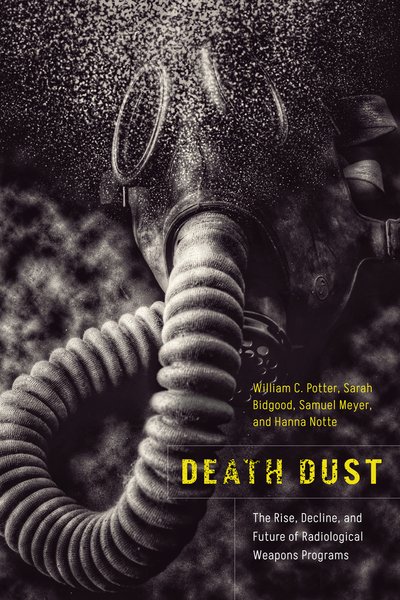Book Review: Death Dust: The Rise, Decline, and Future of Radiological Weapons Programs, By William C Potter, Sarah Bidgood, Samuel Meyer, and Hanna Notte (Stanford University Press, 2023).
Radiological weapons, which are weapons designed to disperse radioactivity without a nuclear explosion, get little attention compared to nuclear and chemical weapons. But Death Dust: The Rise, Decline, and Future of Radiological Weapons Programs brings a new clarity to the worrisome potential of radiological warfare. Through a series of case studies, the authors shed light on the reasons behind the pursuit and eventual abandonment of these weapons by states such as the Soviet Union, the United Kingdom, the United States, Egypt, and Iraq.
They explore the unique motivations and strategic calculations that led these countries to pursue radiological weapons, despite the international community’s general abhorrence towards them, identifying patterns and deviations, and offering valuable lessons for policymakers and scholars in understanding the potential proliferation of these weapons in the future.

The case studies illuminate the historical drivers behind the pursuit of radiological weapons, such as the desire for a strategic advantage without resorting to full-scale nuclear war. However, technical difficulties beset the development of devices intended to spread radioactive materials over large areas. International pressure played a role, too. The United Kingdom ultimately abandoned its radiological weapons program due to the challenges of achieving the desired strategic effects and the moral implications of developing such weapons. The history of international concern over Iraq’s attempts to create a radiological weapon during Saddam Hussein’s regime are also well canvassed.
But the true value of this history is in understanding the current state of radiological weapons programs and the possibility of their resurgence. Geopolitical tensions such as those created by the Russian invasion of Ukraine and the potential search for cheap and unconventional tools of warfare emphasise the need for continued vigilance and preventive measures.
The detailed analysis of past programs provides valuable lessons on the potential consequences of radiological weapons and the necessity of integrating them into international non-proliferation efforts.
The book’s warning goes beyond the actions of governments and also highlights the challenges in controlling and securing radiological materials, which can be found in civilian industries worldwide, making them potentially accessible to non-state actors.
The technological barriers to developing radiological weapons remain high, but there is a gap in the non-proliferation regime given that treaties are not comprehensive and specific to radiological weapons. International oversight is also lacking.
The challenge to the international community is to take practical steps to address the threat posed by radiological weapons, with the book advocating stronger security measures, better tracking of radiological materials, and increased public awareness of the risks associated with these weapons. The international security and arms control agenda cannot afford to ignore the danger. This extensive work by all the contributors is a remarkable addition to the discourse.

